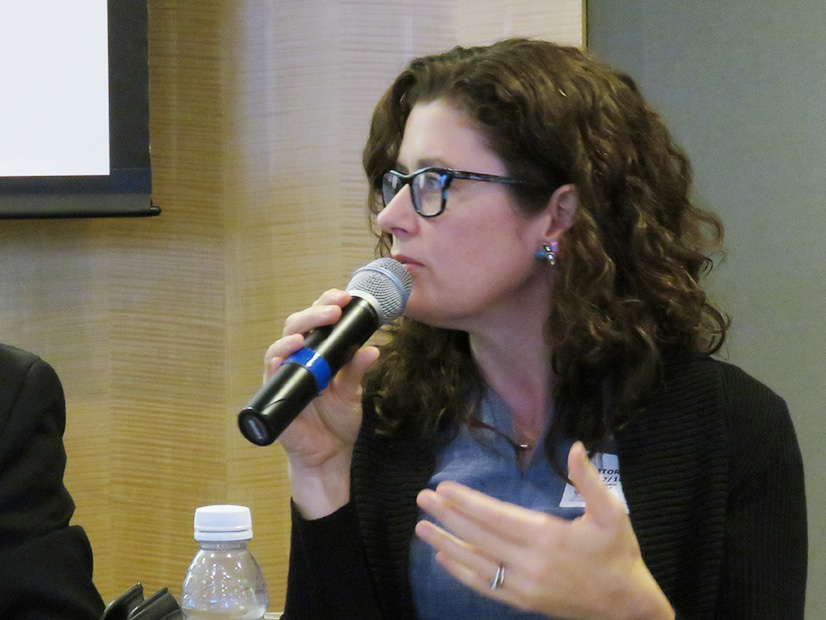Connecticut can follow multiple pathways to achieve a carbon-free electric supply by 2040, according to the final version of the state’s integrated resource plan, the biennial look at future electric needs and the strategy to meet them.
Officials from the Department of Energy and Environmental Protection (DEEP) held a virtual press conference Thursday to discuss the latest IRP, Connecticut’s first assessment of pathways to a zero-carbon electric sector, as directed by Gov. Ned Lamont through a 2019 executive order.
Among the key findings was that storage and demand management will play a vital role “in ensuring reliability of the grid and minimizing wasted generation.” DEEP Commissioner Katie Dykes said companies are working hard to enhance long-duration storage technology, and she applauded the U.S. Department of Energy’s “Long Duration Storage Energy Earthshot” that establishes a target to reduce the cost of grid-scale energy storage by 90% for systems that deliver 10 or more hours of output within the decade.
“That’s all good news for people who care about achieving both reliability and a decarbonized grid,” Dykes said.
DEEP is also seeking stakeholder and market input on storage procurement. The Connecticut General Assembly this spring passed legislation that targets 1 GW of energy storage deployment by the end of 2030 and gives DEEP procurement authority. The department can also issue requests for proposals for transmission and distribution grid-connected energy storage, which would factor toward deployment targets. (See Connecticut General Assembly Passes Energy Storage Bill.)
“We’re eager to hear from market participants or stakeholders about how such a storage procurement should be conducted in order to enhance the opportunities for long-duration storage,” Dykes said.
“Timely” enhancements to energy and ancillary services markets would also allow storage resources “to compete and be valued in the wholesale markets,” Dykes added.
Increased investment in long-duration storage also yields environmental justice benefits, Dykes said. Use of batteries would allow Connecticut to transition away from fossil fuel units that are used to maintain reliability but also comprise the “heaviest contributors” of emissions in environmental justice communities.
“We’re especially motivated with this storage procurement, as well as the focus on other types of investments around demand response and transmission,” Dykes said. “That can help to ensure we can scale up the investment of resources that can maintain reliability with the least emissions possible, [which is] critical for us to achieve our decarbonization goals and our commitments to advancing environmental justice.”
Continued Push for ISO-NE
The IRP continues Connecticut’s call for changes in market design and transmission planning by ISO-NE. Dykes said the RTO has made progress on the New England states’ concerns around transmission planning. It has also worked to eliminate the minimum offer price rule (MOPR) with input from NEPOOL stakeholders.
“We believe that wholesale market reforms are greatly needed much beyond just eliminating the MOPR,” Dykes said. “We need to ensure that the wholesale markets that we’re relying upon have reforms to energy and ancillary services markets that will help to ensure that carbon-free resources that are needed to maintain reliability are being procured as much as possible and valued in the wholesale markets that Connecticut chose to rely on more than two decades ago. We believe that’s really where the focus needs to be on if we’re going to find some compatibility between our state public policies and the design of wholesale markets.”
While governance is not explicitly spelled out in the IRP, “at first blush,” Dykes said, “incremental changes” by ISO-NE signal that the RTO wants to engage more with the states. Those changes include annual open Board of Directors meetings focused on wholesale electricity markets and system planning, a process potentially linked to the biennial Regional System Plan public forum.
Dykes said governance concerns also relate to ensuring broader accessibility to and transparency in ISO-NE’s processes for “all stakeholders and affected ratepayers in the region.”
“These incremental steps reflect the progress New England states have made in elevating the need for governance reforms, as a critical issue in our region,” Dykes said. “I’m convinced that we will not succeed in achieving better transmission planning and investment, or market designs that are more compatible with state public policies and consumer needs, unless we make transformative changes to the governance structures and transparency of ISO-NE.”

